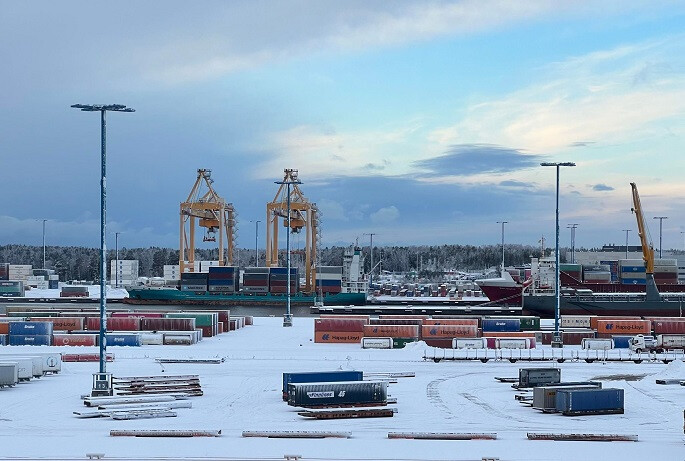
Finland's economic landscape is showing signs of strain, as evidenced by the latest trade statistics released by Finnish Customs. In 2024, the nation experienced a notable downturn in both exports and imports, resulting in a widening trade deficit that demands careful consideration.
The figures are stark: a 5.4 percent decrease in the total value of exports and a 3.3 percent drop in imports compared to the previous year. This decline is not merely a matter of value; it's echoed in volume, with exports down by 3.5 percent and imports by 2.8 percent. These reductions underscore a broader trend of diminished economic activity and shifting global trade dynamics impacting Finland.
The resulting trade deficit of EUR 2.1 billion is a significant indicator of the challenges Finland faces. Traditionally strong sectors, such as the chemical forest industry, industrial machinery, and metals, have seen their trade surpluses diminish. Conversely, while the mechanical forest industry has shown resilience, the overall picture is one of contraction.
Notably, the deficit has deepened in crucial areas like crude oil, refined petroleum products, and transport equipment. This suggests vulnerabilities in energy and transportation sectors, which are vital for Finland's economic stability. On the other hand, a decrease in the deficit for ores and metal scrap offers a sliver of positive news, indicating potential adjustments in resource management.
The geographical breakdown of trade data reveals further insights. Exports to EU countries fell by 3.1 percent, while those to non-EU nations plummeted by 8.5 percent. This disparity highlights the challenges of navigating an increasingly complex global market, where geopolitical tensions and economic uncertainties play a significant role. Similarly, imports from both EU and non-EU countries experienced declines, albeit less severe.
These figures raise pressing questions about Finland's economic strategy. How can the nation revitalize its export sectors and reduce its reliance on volatile commodities? What measures can be taken to enhance competitiveness and foster innovation in key industries?
The Finnish government and businesses must collaborate to address these challenges. Investing in sustainable technologies, diversifying export markets, and strengthening domestic industries are crucial steps. Furthermore, fostering a resilient supply chain and mitigating the impact of external shocks will be essential for long-term economic stability.
As Finland navigates these choppy economic seas, strategic foresight and decisive action are imperative. The 2024 trade deficit serves as a wake-up call, urging the nation to reassess its economic priorities and chart a course towards sustainable growth and prosperity.
[Copyright (c) Global Economic Times. All Rights Reserved.]




























